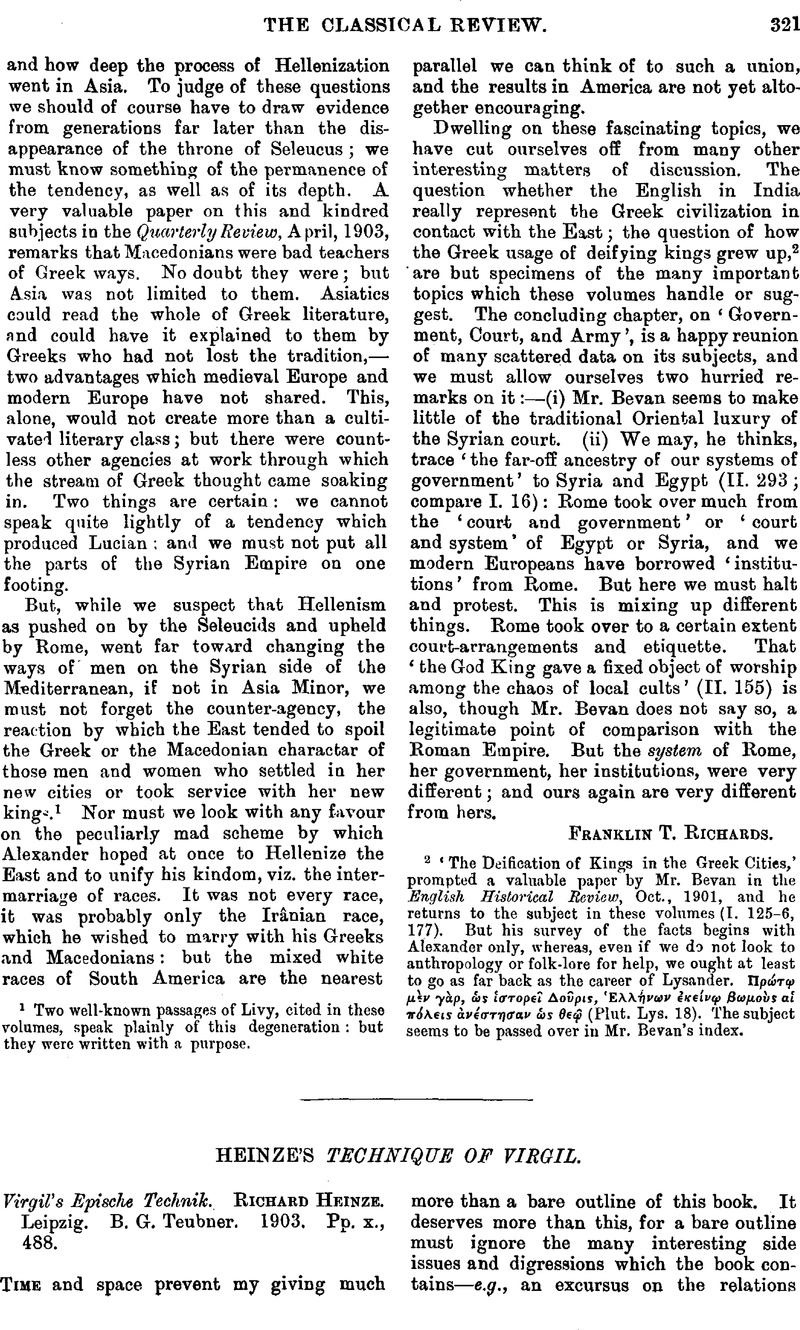No CrossRef data available.
Article contents
Heinze's Technique of Virgil - Virgil's Epische Teehnik. Richard Heinze. Leipzig. B. G. Teubner. 1903. Pp. x., 488.
Review products
Published online by Cambridge University Press: 27 October 2009
Abstract

- Type
- Reviews
- Information
- Copyright
- Copyright © The Classical Association 1903
References
page 322 note 1 The remarks on the Helen episode of Book II. for the most part only repeat what others have said. The new point raised, that V. and Homer do not admit monologues in the narratives of their respective heroes, is not convincing. I should like to note here that as the gods of Troy had left their shrines and altars (351), and the image of Vesta was probably among those carried away by Aeneas, V. may easily have regarded the temple of Vesta as now ‘profane,’ and this disposes of the most serious point raised by objectors—that pius Aeneas can never have thought of slaying Helen in the temple. That she was actually at the altar, as Prof. Heinze assumes, is not, think, meant by V.: limina seruantem implies the reverse, and secreta sede only means ‘in a corner.’ I believe V. marked the passage for revision, as he felt that after Aeneas comes to himself with a start and finds himself alone we expect him henceforth to act, not simply to change the point to which he directs his eyes and so derive a motive for acting.
page 322 note 2 Cumulalam morte remittam, ‘repay with interest, even with my life,’ morte being used quite rhetorically: depacisci morte in Ter. Phorm. 165.
page 322 note 3 Here Prof. Heinze thinks V. unconsciously returned to his former hypothesis.
page 323 note 1 Sil. Ital. 14, 11.


